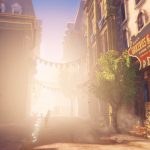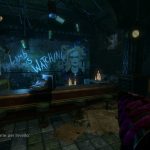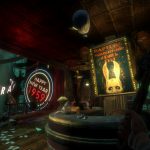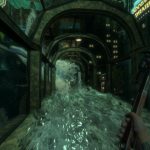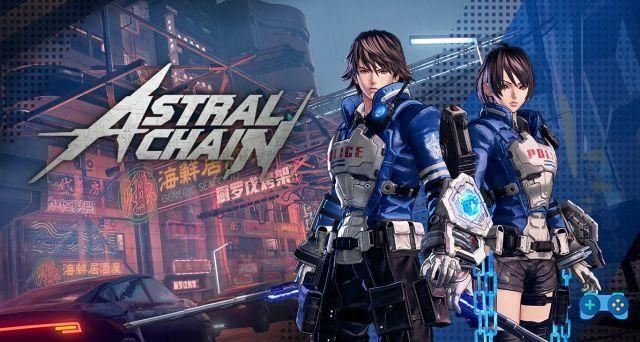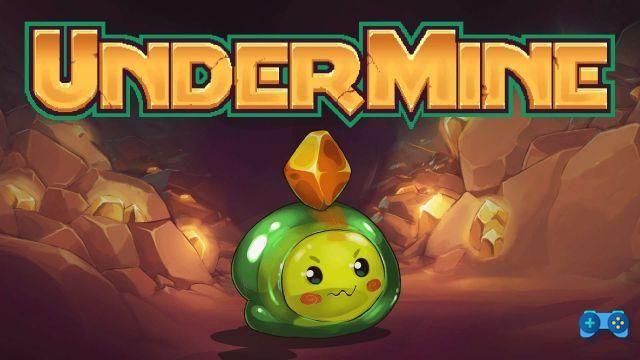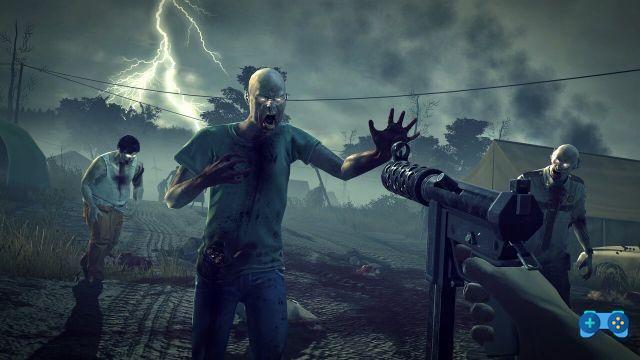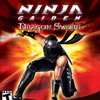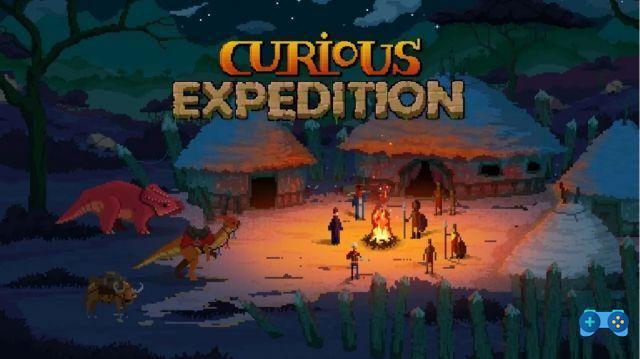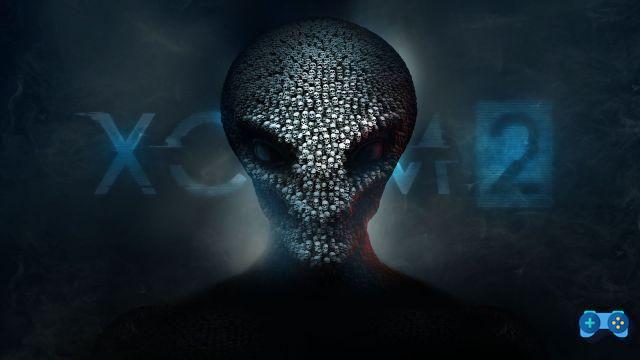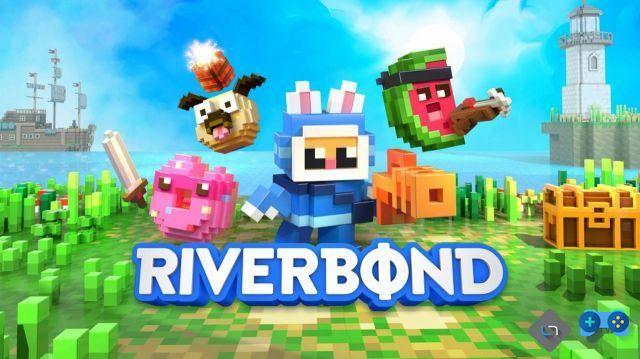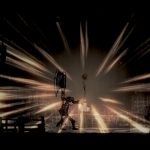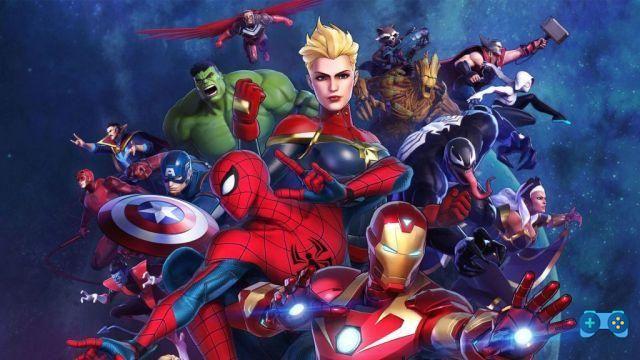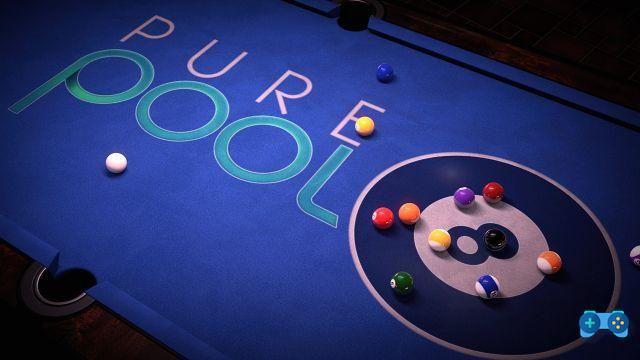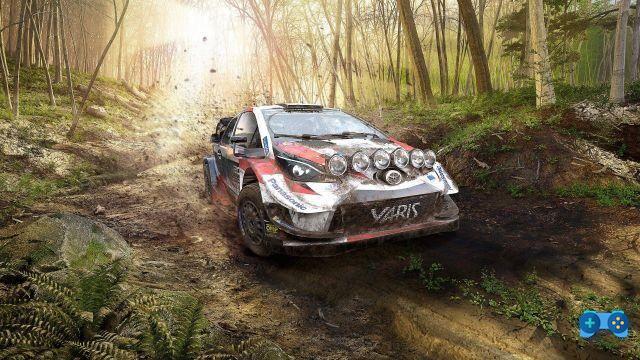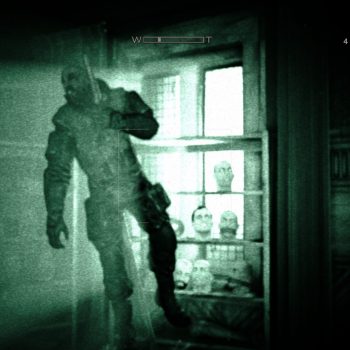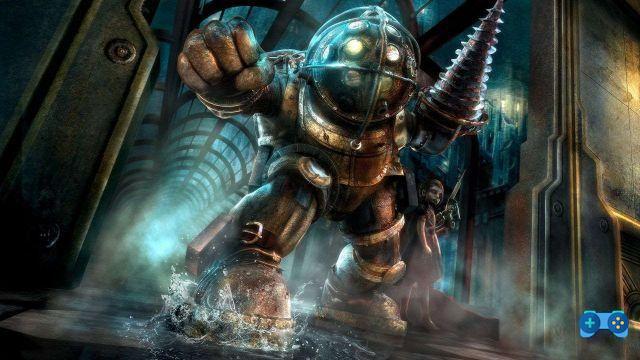
“How to conquer the world and vanish into thin air”, a story by Ken Levine.
The world of video games differs from all other existing narrative media in many respects. One of these, evident and objective, is the identification of the author behind the work. A book has a writer, a film has a director. Of course, on the one hand, the similarity between the figure of the game designer and that of the film director is evident. However, in the videogame market there is always a tendency to identify works as linked to a development team, rather than to a single creative vision. Yet, in a world of software houses, there are some authors who are able to achieve fame and become popular as stars. Miyamoto, sure, Kojima, sure. But also Ken levine since the mid-2000s it has been one of these for nearly a decade. With Bioshock first, and then with Bioshock Infinite, interspersed with his heavy absence in the second chapter, Levine achieves notoriety and gains the trust of critics and audiences. To then dissolve Irrational Games and disappear into thin air. The game designer has been working on an independent game for years now, of which we don't know anything to date.
Since 2013, the year in which the good Ken closed the circle of his creative vision with the third chapter of the series, seven years have passed. In the meantime, the trilogy has been remastered and brought to next gen consoles. Finally, well 13 years after the release of the first chapter, the series also arrived on a Nintendo console. The one for Switch is through and through a port of the collection that we have already been able to appreciate on other consoles, but for the first time we can visit Rapture and Columbia also in portability.
No gods or kings, only men
Return to the city, fruit of the anarchist dream of Andrew Ryan it is always an indescribable emotion. Although the signs of time are noticed, the artistic direction and care placed in Bioshock still transpire today, from the very first moments. The plot, the gameplay, the setting and its silent tale: everything is still in its place, as fascinating as in 2007. The city of dreams at the bottom of the sea, the dream vision of its founder, still firmly clinging to his ideals and short-sighted to bankruptcy, the contrasts of the isolated micro society: Bioshock remains one of the greatest masterpieces that the world of video games has produced in the new millennium.
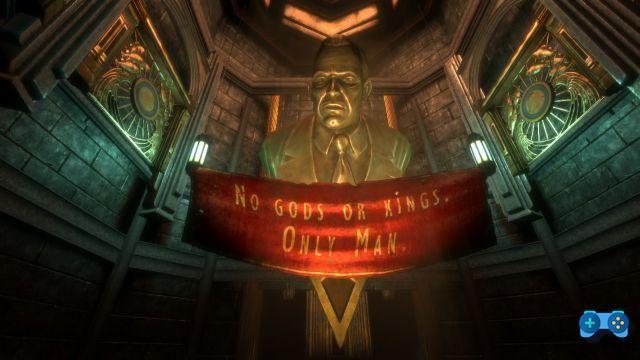
But the feeling, starting the first chapter in portability, is to be locked up, limited. It all seems too small, even the initial menu. The interface in general is compressed, not always easy to read. Then when you arrive in Rapture, with those very high windows, the view that opens onto wonderful interactive paintings, the urge to escape on a bigger screen becomes uncontrollable. The Switch diagonal is not enough, Bioshock stuck in it looks like a cheap game, one of those spin off chapters of famous IPs, released on PSP and produced with reduced budgets. The 720p reduction is noticeable, but that's not the only problem.
In general, there is a constant sensation of looking at something designed for a higher number of inches. And it's obvious that Bioshock was meant for a bigger screen. The goal of the Switch port was to be give life to a product that can be appreciated even on the small screen. Objective not entirely achieved, at least with the first chapter. You would like to continuously zoom in, throughout the gaming experience you feel the urge to go deeper inside. The management of light and reflections was probably too obsolete to be able to be made enjoyable in portability. It remains a great pity for us. The experience changes completely on a bigger screen. The game becomes very enjoyable on the TV, in all respects similar to its counterpart for home consoles. The graphics rendering in 1080p is excellent.
Noises and voices from Rapture
Like the visual component, the sound component also suffers from portability. Rapture's dystopian nightmare is also frescoed thanks to immersive audio. From the melodies of the 50s to the chants of distant recombinants, from the noises of flying robots to the heavy footsteps of Big Daddies: everything contributes to impressing a memorable imagination in the mind. Playing on the little Nintendo Switch involves giving up all this mosaic of sounds and noises, unless you choose to play with a nice pair of headphones.
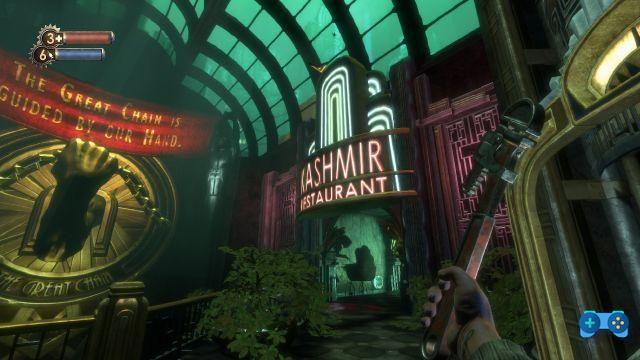
In fact, even at maximum volume, the speakers of Switch are not enough to make every detail perceive, nor are they able to give the right idea of three-dimensionality. Everything appears too muffled, from the voices of the Splicers talking to each other, to the messages of Atlas. The player is forced to constantly strain their ears trying to steal everything the game wants to communicate through its audio compartment. The situation changes when playing on a television, also in this case. Although the game still suffers from a less than perfect audio mix, the TV makes everything around us audible.
Against the control system works pretty well, which, however, is not surprising given the excellent distribution of the keys on the Nintendo hybrid. Even on this front, however, the game pad in the hand remains preferable, even if it is the grip with the two Joy Con inserted.
Bioshock 2: as the Big Daddy
Bioshock in 2007 was an incredible success, both for critics and for sales. For the first time, even the most casual audience found that a first person game didn't have to be a fast-paced shooter. In a short time it became one of the most talked about games, the setting of which was fantasized a lot. It didn't take much for the publisher to take the opportunity to bring us back to Rapture, of course. And what better way to do it than by putting ourselves in it as one of the most iconic enemies of the first chapter? After all, the figure of the Big Daddy is fascinating: a super man genetically modified by ADAM and eternally sealed inside a diving suit, armed with a drill. His only goal: to perpetually protect his little sister.
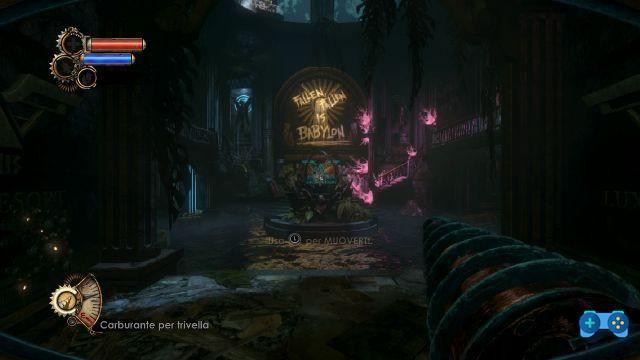
So in Bioshock 2 we find ourselves inside the diving helmet, in the role of an old model of Big Daddy, "died" in 1958, two years before the events of the first chapter, and awakened in 1968. of Andrew Ryan there is no trace, Rapture is in disarray, but not everyone is crazy. Dr. Lamb in particular he is trying to regain control of the city, but his is not the only faction we will encounter. The arms and plasmid race is even stronger than before.
Although the lack of Ken Levine's creative guidance is felt, the title has a lot of interesting ideas and a gameplay that is still new compared to the first chapter. It must be said that various teams have worked on the game, however, including the very talented Arkane Studios. Indeed in this second chapter we meet areas and characters even more exaggerated than seen in the first, and we can see Rapture in more depth and from a totally different perspective.
Digital water infiltrations
Our second adventure in the city under the Atlantic dates back to 2010, but it has aged really well, and even its portable version on Nintendo Switch offers a satisfying technical sector. Of course, the resolution is still lower and on certain occasions you still feel the desire to move to the TV. However the game is much more enjoyable in portability compared to the first chapter.
On the aesthetic front, the lighting is handled much better here, the game is more fluid and in general it is much more impressive to see, even on the small screen. If we then look at the work done on water, an obviously disruptive element (even in the literal sense) we are amazed that something like this could be done 10 years ago. And all this can also be appreciated well by playing on the train, in the bathroom or simply lying comfortably in bed. And yes, it is a great added value.
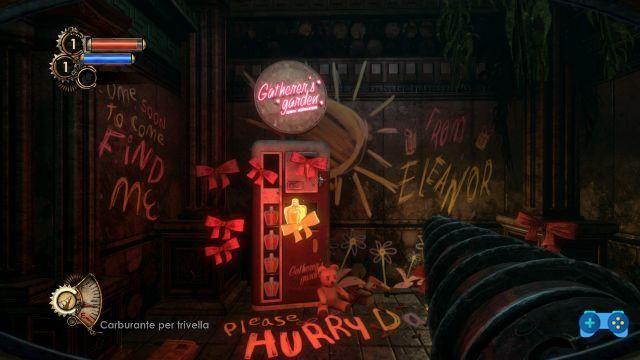
It must also be said that the audio mixing compared to the first chapter was handled much better here. There is no longer that feeling of effort to be able to grasp: the audio is clearer, the volume of voices and sounds is higher. Even without headphones, Bioshock 2 is a good title to play on the Switch, without worrying about the experience being mutilated. However, it remains more engaging to play such a title, which bases much of its charm onfirst person dive in a gloomy world, on a TV with a very wide diagonal, perhaps with headphones capable of offering three-dimensional audio. It could have been better manage the vibration instead, perhaps a little too heavy considering that it is the screen we play on that shakes. Especially considering that the Switch vibrates with every jump of our Big Daddy.
But what if there was a God? Bioshock Infinite!
The greatness of Irrational Games, even before dragging the player into a realistic and reactive environment, was in theimagine suggestive worlds. Ken Levine understood this, and after exploring the dystopian city of Rapture, born from Andrew Ryan's anarchist and capitalist dream, he embarked on a different project. From his ideas was born Columbia, a city that decades before the oceanic metropolis soared in the sky using the steam that moved its airships. And in this "heavenly paradise" power does not derive from capital and human freedom, but from faith. In fact, Father Zachary sits at the head of this city Comstock, the prophet who he saved men from the Sodom below. A preacher who ennobles and unites through baptism, and whose seed will destroy the metallic mountains of sinners who live below.
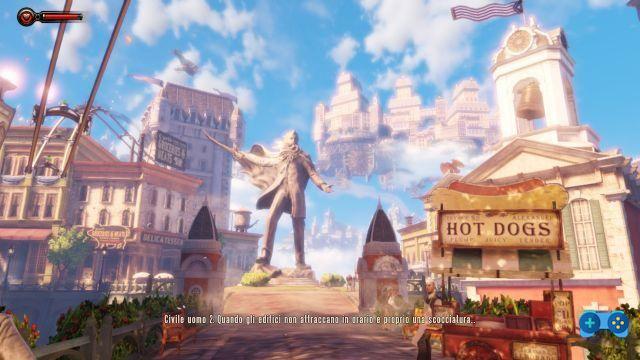
It is in this scenario that we find ourselves catapulted from Sodom straight to Columbia, in the role of Booker Dewitt. And it is not a metaphor: we ascend to heaven in a capsule that uses the energy of steam, up to the celestial city. We will later discover our role as a false shepherd, we will find out who the girl is, Elizabeth, but most of all we will find that beyond the veil of religiosity and fanaticism there is a hypocritical and intolerant society. Once again Irrational showed the contradictions of contemporary Western societies through the extremeization of one of their founding elements.
The Earthly Paradise has flown into Switch
And once again the magnetism of the world painted by Ken Levine and his team is shocking. Columbia is a dream, a joy for the eyes, a paradise on screen. The suspended buildings that rise from the clouds, the religious statues, the commercial signs, the propaganda: all flooded with the purity of a sunlight that spares nothing. The impact remains majestic even after seven years, even on the small Nintendo Switch with its 720p.
Again, as with Bioshock 2, Infinite is perfectly enjoyable even on the small screen. Obviously something is lost, not only in terms of resolution, but also in terms of texture. But that doesn't spoil an enthralling and memorable experience nonetheless. Just a pity for an interface perhaps too skimpy.
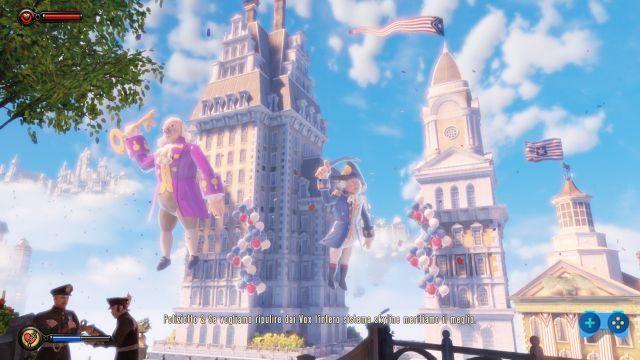
Similarly to the second chapter, the audio works well here too: even without headphones you can play Bioshock Infinite on the small screen of the Switch without missing any beat or intonation. Evidently the problems that afflict the first Bioshock are due more to the obsolescence of the original source than to the porting work carried out. Although it still remains an imperfect job.
Bioshock is another pearl in the Switch stock.
The Bioshock series, with all its flaws and its ups and downs, represents a milestone in the modern video game. An experience capable of sublimating all those elements of the immersive first-person game and surrounding them with an impressive setting and silent story. All enriched by always disruptive main stories, capable of destroying the player's beliefs, of overturning right and wrong, but also real and unreal.
The fact that this Bioshock Collection gives finally the chance to Nintendo users to play a seminal trilogy for the medium like that of Irrational Games is already a huge value for this collection. To this must be added the possibility of living these three experiences in portability. Was it really needed? The answer is probably no, for different reasons.
On the one hand, it is clear that a game that makes immersion one of its cornerstones loses much of its charm and involvement in portability. After all, how can you dive in Rapture or Columbia while on the train, for example? On the other hand, although the three titles are still enjoyable, it is clear that the impact that Bioshock was able to give continuously if played on the big screen, cannot be replicated on the small screen. How can we think that certain majestic scenarios, certain plays of light and shadows, can be equally effective when reduced to the bone, both in terms of size and for the reduction of aesthetic quality to a minimum?
Ultimately we cannot but advise anyone who has never played Bioshock to do it for the first time on a screen of satisfactory size. On the other hand, for those who already know the series and want to relive it in a more relaxed way, they can definitely evaluate the possibility of playing in portability. It must also be said that you currently find the exact same Collection on the PlayStation Store for only € 9,99 against € 49,99 to which it is sold on the Nintendo store.




